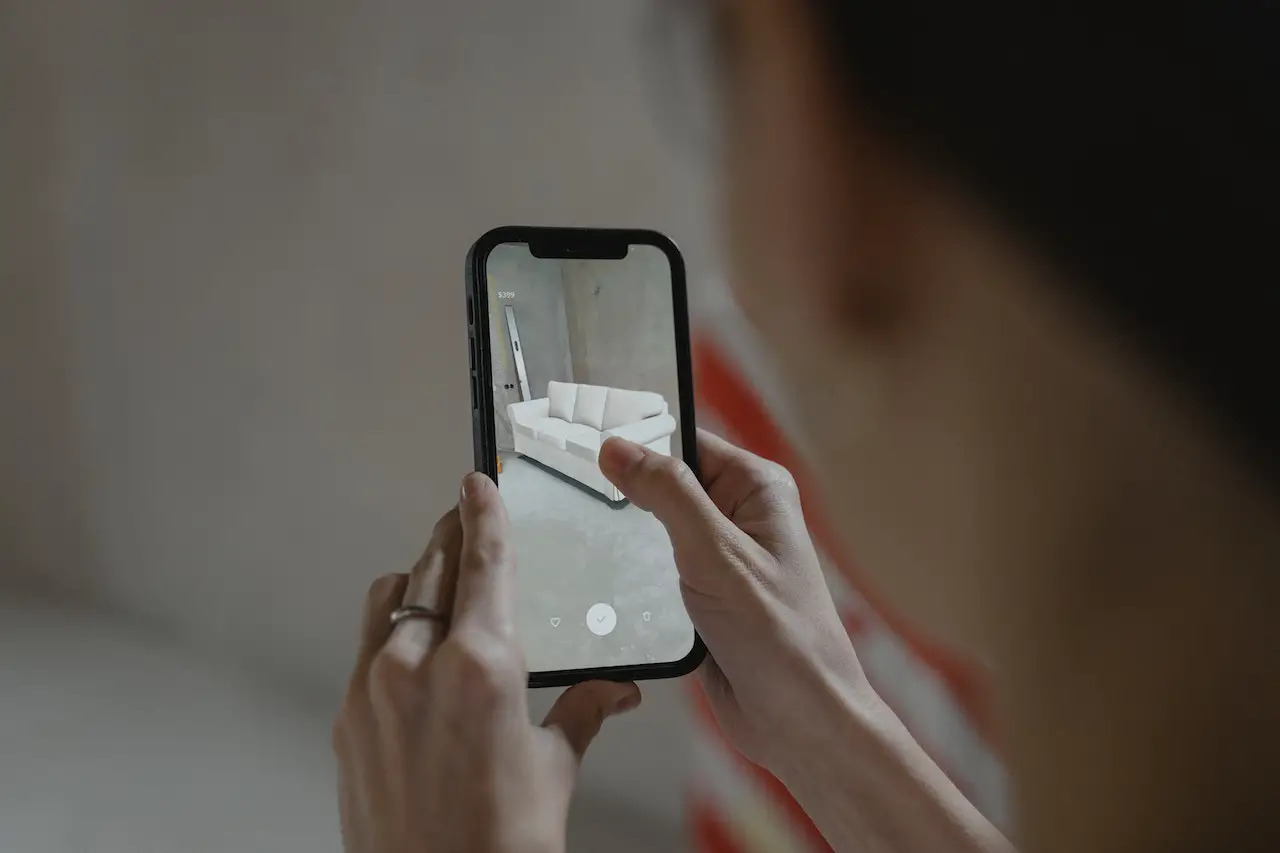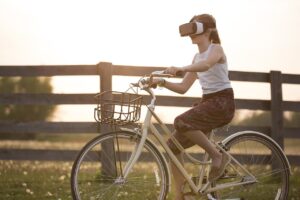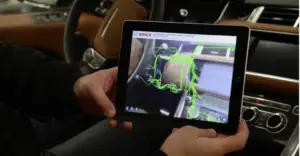Augmented reality (AR) is like a little brother of virtual reality (VR), which focuses on making the life of its users easier rather than transporting them to a completely digital world. In this article, we’ll cover everything you need to know about the basics of Augmented Reality, from explaining what it is and what it’s capable of to reviewing some tools for developing your own AR applications.
What is Augmented Reality (AR)?
AR is a type of extended reality that combines digital elements with the real world. Contrary to VR, which changes the user’s entire environment into a digital one, AR simply enhances the real world, leaving the user present in the real world.
To see augmented reality, you need to have augmented reality glasses, also called smart glasses. Such glassware can display digital content right before your eyes, creating a realistic illusion that it appears in real life.
However, augmented reality glasses aren’t nearly as popular as virtual reality headsets. AR technology isn’t as developed right now, so smart glasses tend to be too expensive for what they offer.
Furthermore, most AR applications aren’t even built for smart glasses. Most AR apps are tailored specifically for smartphones, which can replicate a similar augmented reality effect as the glasses, albeit a little less immersive.
So, in what ways can AR augment or enhance our reality?
Different Types of Augmented Reality (AR) Features
The possibilities of AR are nearly endless, that’s why we’re going to present the most widespread applications of AR features:
- Face Tracking: is probably the most used AR feature, the backbone of Instagram and Snapchat filters.
- Image Tracking: can track a real-life object and put a layer of digital content on it.
- Plane Tracking: instead of tracking a fixed image like image tracking, it can track and enhance various planes in the real world.
- Body Tracking: can follow a person in the real world and apply layers of digital content onto their entire body
- 3D Object Tracking: essentially body, tracking for inanimate objects
- Light Estimation: replicates real-life lighting on the layer of digital content
Creating AR Apps
The easiest way to create your own augmented reality application is to use one of many software development kits (SDKs) built by huge tech companies. Instead of writing code from the ground up, you can use SDK. It’s basically a set of tools containing everything you need to easily and quickly create your AR app. Some of the most popular and fleshed-out SDKs are:
ARCore
ARCore Consists of free tools for creating image and plane tracking, the shared world, and light estimation features.
ARKit
Offers free tools for creating nearly every single type of AR, including light estimation and image, body, face, plane, and 3D object tracking features. The main downside of ARKit is that it’s only compatible with iOS.
Vuforia and Wikitude
Two of these SDKs are direct competitors, specializing in paid tools for image, plane, and 3D object tracking.
Follow us on Linkedin.
Read other Articles





